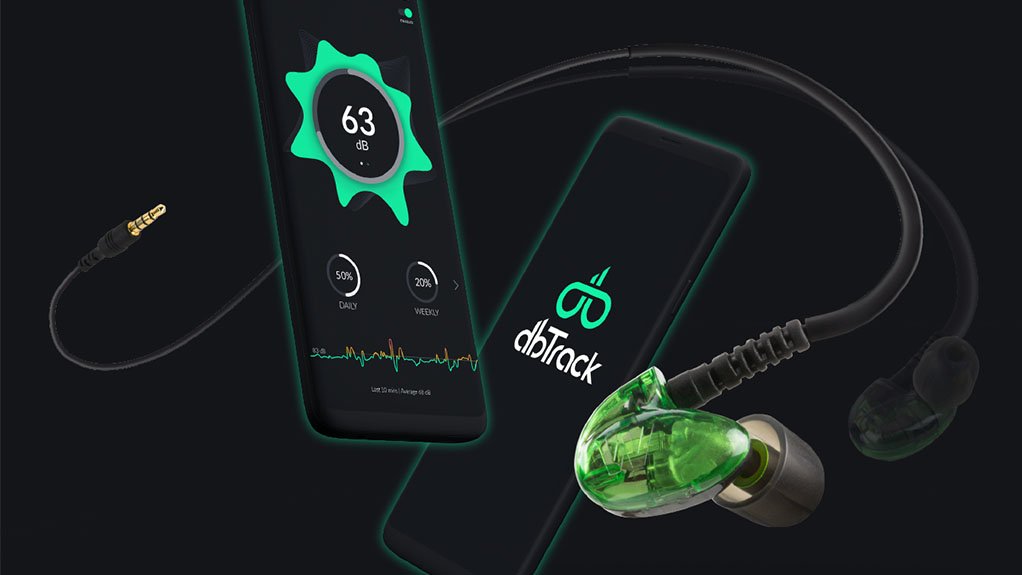More than a billion adolescents and young people are estimated to be at risk of acquiring recreational noise-induced hearing loss (RNIHL) as a result of the unsafe use of personal audio systems.
Loud noise is particularly harmful and once the delicate inner ear hair cells are damaged, hearing loss is permanent and irreversible. A single exposure to an extremely loud sound or listening to loud sounds for a long time, can cause hearing loss.
Researchers at the University of Pretoria (UP) undertook a first-of-its kind study to understand the accuracy and reliability of sound-level monitoring earphones and the effect of smartphone feedback as an intervention to encourage safe listening among young people.
“This is an applied solution to the real-world problem of hearing loss for more than a billion young people at risk,” says UP Department of Speech-Language Pathology and Audiology Professor De Wet Swanepoel, who led the study. The study was published in the peer-reviewed journal Ear and Hearing.
“This world-first technology includes high-quality earphones, with an in-ear microphone to measure personal sound exposure in a person’s ear canal,” explains Swanepoel. “Coupled with a tracking application (app) that provides real-time feedback on sound levels when using the personal audio devices, dbTrack provides a first-of-its-kind solution for safe listening.”
He adds that the accompanying dbTrack smartphone app records listening activity measured by the earphones and calculates an accurate sound exposure dose in real-time. “Described as a Fitbit for your ears, the dbTrack earphones and app provide instant feedback based on personal listening behaviours,” says Swanepoel.
“The in-ear microphone inside the earphone measures sound levels in real-time as the music is playing in someone’s ear through their personal audio device. Each set of earphones are individually calibrated for accuracy."
One of the main objectives of the research was to determine the accuracy of the in-ear sound-monitoring feature, compared to laboratory equipment. This was done by recording sound intensity levels over time in the ears of participants and then recording the same intensity levels in standard laboratory equipment. Test-retest checks were also conducted under both conditions. Results demonstrated that the in-ear monitoring feature was very accurate and reliable within 1 dB.
The second objective was to evaluate whether the dbTrack technology and app-based feedback changed listening behaviours when used by listeners. Enrolled participants were regular users of personal audio devices and they received the dbTrack earphones and app. The research app was set to show monitoring feedback for the first two weeks of the study as a control condition and after two weeks the app switched to provide feedback and notifications on users’ sound exposure. Results demonstrated significantly safer levels and durations of listening when the app feedback was active.
The app includes feedback on the intensity, duration and associated risk of hearing damage for individuals. The criteria are based on the World Health Organisation and ITU Safe Listening Standards.
Swanpoel offers the following tips to protect users’ ears:
- Listen to personal audio devices at a volume level below 60% of the maximum volume.
- Use carefully fitted and noise-cancelling headphones whenever possible.
- Wear earplugs in noisy venues and move away from sources of loud sound, such as loudspeakers.
- Take short listening breaks away from loud sounds and limit the daily use of personal audio devices.
- Use smartphone apps and earphones like dbTrack to monitor sound exposure.
- Choose devices with built-in safe-listening features.
Westone Audio, in partnership with the hearX Group, was the first manufacturer to include the technology in its devices and new versions are planned for future release to various earphone manufacturers.
EMAIL THIS ARTICLE SAVE THIS ARTICLE
To subscribe email subscriptions@creamermedia.co.za or click here
To advertise email advertising@creamermedia.co.za or click here













